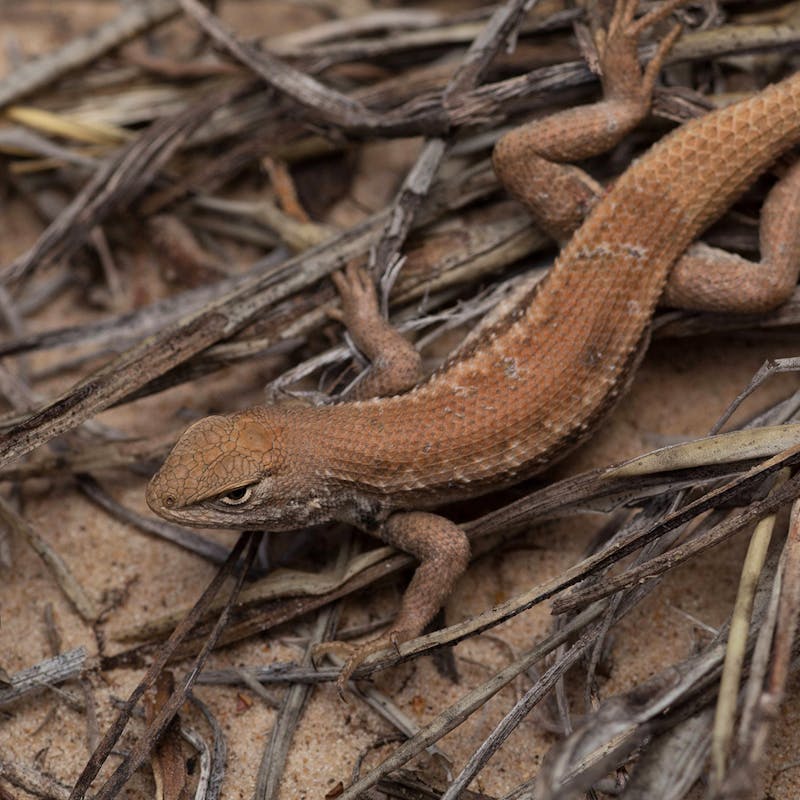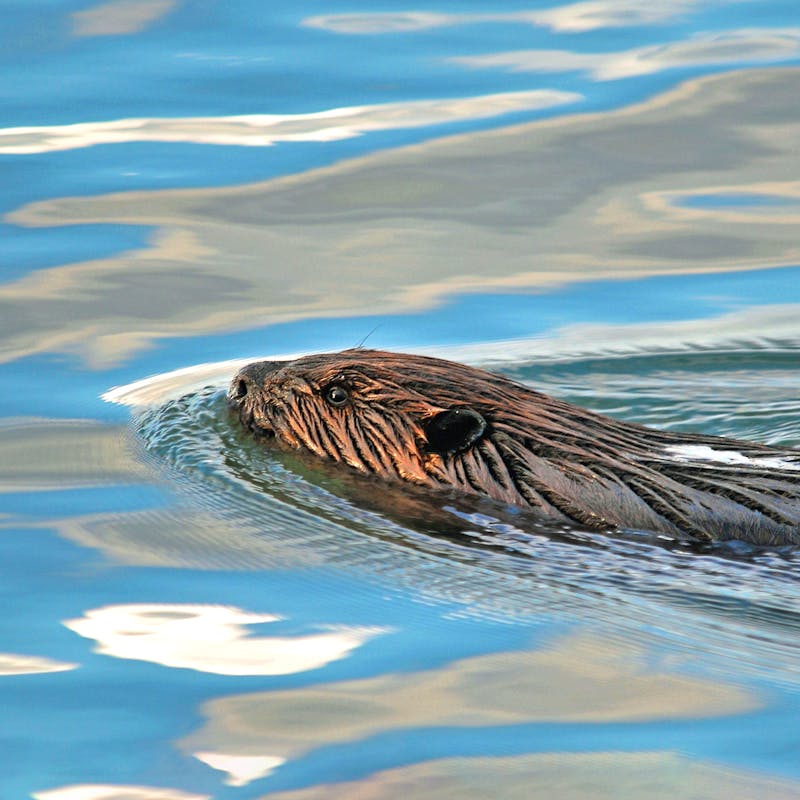When you look out your window in the dead of winter do you ever wonder why you don’t see much wildlife? When I was in college, that question intrigued me. Little did I know at the time that my curiosity would be the start of a long career as a wildlife biologist. As an undergraduate, I was required to complete an independent study, and as a biology major interested in field biology, I knew my study would take me outside. Fascinated with animal behavior and questions like how animals prepare for winter, I decided to observe the Eastern chipmunk (Tamias striatus) in the fall leading up to its winter hibernation. I spent my early mornings and breaks between class sitting in the woods and watching as these industrious creatures stepped up their food-gathering. Then as the days got shorter, the temperature got colder and they had cached an ample supply of food, they were gone—hibernating.
What is hibernation?
There are several ways that animals respond to winter: they migrate, adapt or hibernate. But hibernation isn’t as simple as going to sleep for a couple of months. Although there are various degrees and duration, hibernation always involves certain changes for animals. Their body temperature decreases, their breathing slows, and their metabolic rate drops.
It can be a lot of work, getting ready to hibernate. Many animals have to find or create that perfect, safe spot to bed down for months at a time, whether it’s a cave, a hollow tree, or a den dug into the ground. Usually, before they go into hibernation, the animal has to increase its body fat to survive, which means eating much more than usual in the months leading up to winter. Although hibernation always happens in winter, many different things can act as the actual trigger for animals to start, including temperature drops, decrease in food availability, changes in day length and hormone changes.
What animals hibernate?
There are several animals that hibernate– skunks, bees, snakes, and groundhogs to name a few– but bears and bats are the most well-known.
Bears enter their dens for hibernation based on changes in the weather. They generally begin hibernating in September or October and emerge six to seven months later around April. During hibernation, bears don’t decrease their body temperature as much as some other hibernating species. This gives them the ability to warm up more quickly in response to danger. But they do cut their breathing rate from 6-10 breaths per minute to one breath about every 45 seconds, and their heart drops rate from 40-50 to just 8-19 beats per minute. While they’re hibernating, bears live off fat that they build up during the summer and fall months. For female bears that level of fat is especially important because they will give birth in their dens during hibernation, and spend months nursing their cubs without eating anything themselves. In the spring, bears begin to emerge from their dens as the temperature warms up and food becomes more available (though in some places, this is happening early). Having not eaten for months, these newly-awoken bears are hungry, and some have new cubs to feed as well. Since they are desperate for food both before and after they hibernate, fall and spring are the times where bears are most at risk of getting into conflict with humans over what they see as easy food sources. Projects like Defenders’ electric fencing initiative are essential to keep these animals safe and out of trouble.
Some bats also hibernate, particularly those in northern areas where insects are scarce in winter. They hibernate in caves, cavities of trees, old mine shafts and wells, or even in attics. Like bears, bats store up body fat before they begin to slow down their activity and go into hibernation. While they hibernate, they can survive on just a few grams of stored fat for five to six months. But unlike bears, bats go into true deep sleep hibernation with a heart rate as low as ten beats per minute (it’s normally closer to 300-400 beats per minute!). Hibernating bats may not even take a breath for up to an hour. Their metabolism slows down and their body temperature is just a few degrees above air temperature. Bats naturally wake up a few times each winter to drink and perform other bodily functions, but most of the time they’re out like lights.
And what about the chipmunks I studied? As chipmunks hibernate in their burrows, their heart rate declines and their body temperature lowers until it becomes as cold as the temperature in the burrow. They have to raise their body temperature periodically, slowly raising it when it becomes time to eat from caches like the ones I watched them store.
Hibernating animals at risk
Spending a few months asleep may be a good way to get through the winter, but it’s not without its risks. If an animal isn’t able to store up enough fat, or find enough food after it awakens, it may not survive. And if a hibernating creature wakes up too early, they can burn through their fat reserves far too quickly, and die.
Few animals know the danger of this as well as bats. One of the biggest causes of the decline of hibernating bats is white-nose syndrome, a disease caused by a fungus that is transmitted from bat to bat during hibernation. White-nose syndrome has spread from the northeastern U.S. to the central U.S. and is estimated to have affected millions of bats. White-nose syndrome interferes with hibernation, prompting bats to be more active when they can least afford to, and use up the stores of fat they need to get them through the winter.
Perhaps a larger issue is that animals’ hibernation patterns themselves may be at risk. New studies have found that as the winter temperatures heat up due to climate change, chipmunks in these warmer areas are less likely to hibernate. This raises a big question about how climate change is affecting hibernation, migration and other ways animals cope with the changing seasons.
So what can we humans do to help? Besides continuing to fight climate change, the best thing we can do is leave these animals and their habitat undisturbed. If you spend time outdoors in the winter, know what animals in your area may be hibernating, and stay away from their most likely denning sites like burrows, dens and caves. We can also work year-round to protect important wildlife habitat from being destroyed or fragmented. Without healthy habitat to find food and denning sites, wildlife can have a much harder time surviving the winter.
Your support ensures our expert team of scientists, lawyers, advocates and activists have the resources needed to demand action and protection for wildlife across the nation.
Donate Today!











Follow Defenders of Wildlife
facebook bluesky twitter instagram youtube tiktok threads linkedin